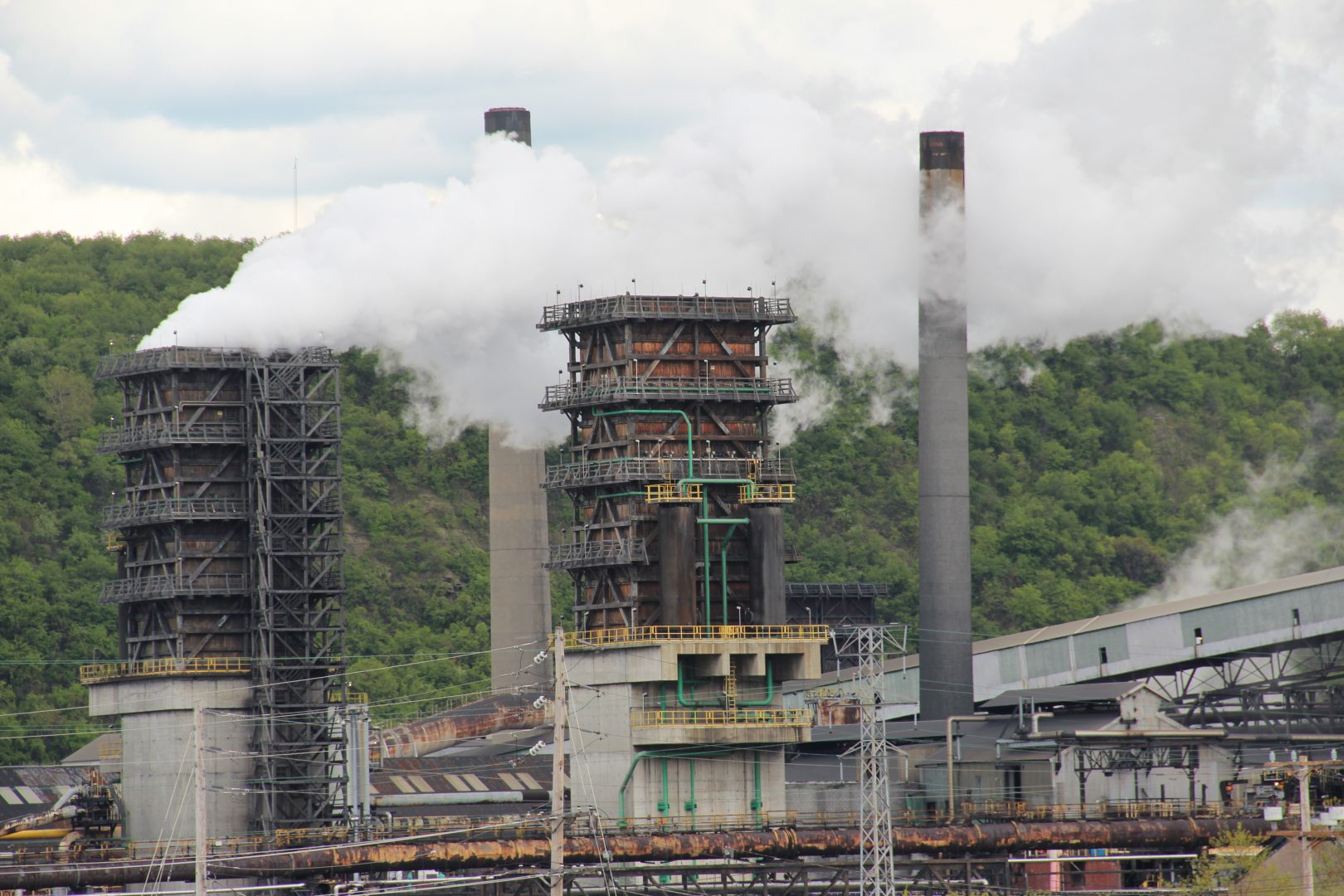
Quench towers at US Steel's Clairton Coke Works.
Reid R. Frazier / StateImpact Pennsylvania


Quench towers at US Steel's Clairton Coke Works.
Reid R. Frazier / StateImpact Pennsylvania

Reid R. Frazier / StateImpact Pennsylvania
Quench towers at US Steel's Clairton Coke Works.
The number of asthma-related outpatient doctor and emergency department visits nearly doubled following the 2018 fire at U.S. Steel’s Clairton Coke Works site, according to a new study.
The Christmas Eve fire destroyed the pollution controls at the Clairton Coke Works, knocking them offline for three months. During that time, the plant released a large amount of sulfur dioxide, a pollutant that irritates the lungs and can make it harder to breathe, especially for people with asthma and other lung conditions.
The research, published in the journal Toxics, looked at the rate of asthma-related visits by adults in proximity to the plant from Dec. 24, 2018 through Feb. 28, 2019 compared to the same time period in the previous year. The research focused on adults aged 18 to 64 residing in Clairton with a diagnosis of asthma exacerbations during the study periods.
The study found that the number of emergency department visits for asthma rose from 19 before the fire to 35 after the fire and acute outpatient visits rose from 54 before the fire to 98 after the fire.
The findings support research published this spring by the University of Pittsburgh that showed residents near the facility experienced worse bouts of asthma and needed breathing aids more frequently after the fire.
The new research provides further evidence of the fire’s impact because it relies on objective information, according to Deborah Gentile, an allergy and immunology physician and the study’s lead author.
“To get discharged from the office or from the ER with asthma exacerbation means you had an asthma exacerbation. So we weren’t relying on patients’ reports,” she said.
U.S. Steel did not return requests for comment on the study.
The study also concluded that the increased asthma attacks weren’t the result of weather aversions or influenza rates. The flu season before the fire was actually worse than the one following the fire, according to Gentile.
Gentile noted that the higher rate of patients seeking emergency room attention for asthma could have been avoided if vulnerable residents knew about the fire and its effects sooner.
“These patients have symptoms, they’re given an action plan” by their doctors, Gentile said. She suggested the county health department launch a rapid alert system to notify residents as soon as possible so they can take action to protect themselves.
That sentiment was echoed by Matthew Mehalik, executive director of Breathe Project. “This is just more evidence that we need a better vision of the future for the Mon Valley,” he said.
Breathe Project published an open letter last month calling for legislators and local leaders to commit to clean air solutions. “We haven’t really gotten any response to that. Why are leaders not willing to have a dialogue that puts the health of communities first?”
U.S. Steel announced earlier this year it would idle three batteries at the Clairton Coke Works site and cancel its previously planned $1.5 billion upgrade. In its announcement about the change, U.S. Steel cited the need to reduce carbon emissions as the reason for abandoning the investment.
The three batteries represent about 17 percent of the facility’s capacity. Idling them will improve air quality, according to advocates. But U.S. Steel’s now-scrapped investment project was initially touted as a way to reduce pollution.
“Other coke plants, when companies don’t invest in them, they continue to degrade and perform more poorly,” Mehalik said. Pollution from the coke works has been a political issue in the region for years, with a debate about how to mitigate negative environmental and health impacts of the facility while maintaining the jobs it provides.
“We all deserve clean air in Allegheny County. We deserve the right to live without fear of our families getting sick from air pollution,” Mehalik said.
StateImpact Pennsylvania is a collaboration among WITF, WHYY, and the Allegheny Front. Reporters Reid Frazier, Rachel McDevitt and Susan Phillips cover the commonwealth’s energy economy. Read their reports on this site, and hear them on public radio stations across Pennsylvania.
(listed by story count)
StateImpact Pennsylvania is a collaboration among WITF, WHYY, and the Allegheny Front. Reporters Reid Frazier, Rachel McDevitt and Susan Phillips cover the commonwealth’s energy economy. Read their reports on this site, and hear them on public radio stations across Pennsylvania.
Climate Solutions, a collaboration of news organizations, educational institutions and a theater company, uses engagement, education and storytelling to help central Pennsylvanians toward climate change literacy, resilience and adaptation. Our work will amplify how people are finding solutions to the challenges presented by a warming world.